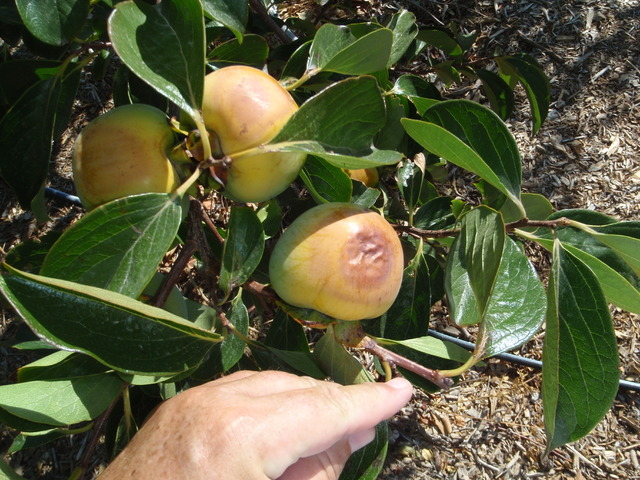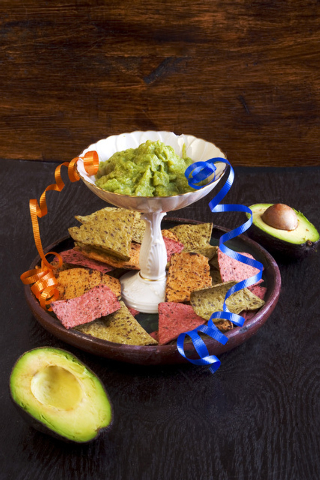Pruned petunia will grow back nicely in spring
Q: I have a Mexican petunia (Ruellia) that is about 4 years old. In 2013 the freeze caused all of the stems to die back. I cut all of them off at ground level and the plant grew back nicely and flowered beautifully.
Apparently, this winter the plant has very little dieback. Should I cut all of the stems off at ground level or just the ones that have frost damage? Will it flower from the existing stems or does it only flower from “new wood”?
A: Mexican petunia is considered an herbaceous perennial, which means it freezes to the ground if it gets too cold and grows back from the base. It is summer flowering so the flowers develop on new growth. Flowers will develop on new growth from older wood as well as from new growth at the bottom.
You have two choices. You can prune it to the ground again just as if it froze back. It will grow from the base and flower just like it had in 2014. That’s the easy way.
Your second option is to keep it at this height and remove anything dead or weak to the ground. Next, you would cut the remaining stems back to a height where you want it to branch. Cutting it back or shearing it will cause it to grow more densely above where it is sheared and flower.
The second method will give you a taller plant if you want one. If you need to keep it small, then use the first method.
Remember to fertilize it now with an all-purpose fertilizer for promoting flowers such as a rose fertilizer, fruit tree fertilizer, tomato fertilizer or something similar.
Q: Last year I grew an avocado outdoors from its pit. As the temperatures began to dip I transplanted it to a pot and brought it inside. The older leaves have begun to turn brown and dry up. I fertilized it once since bringing it indoors. I water it lightly every other day as the leaves begin to curl up due to lack of water.
A: The main reason leaves drop from an avocado brought inside is the change in light intensity or duration. Moving it from a soil to a container can cause leaf drop as well. Leaf drop can be caused by a watering problem. A fourth possibility are pests like mites.
Plants grown outside develop a different type of leaf than plants grown inside. The change in light intensity causes leaves grown outside, called sun leaves, to drop. The plant begins to add new growth with a thinner, larger leaf called a shade leaf.
Disruption of the root system can cause leaves to drop. We call this transplant shock. It also is possible that the change in watering could cause leaf drop. Avocados are prone to mite problems so if there are mites on your interior plants it’s very possible they were transferred to the avocado.
What to do? Make sure the avocado gets as much sunlight as possible. A south-facing window is probably best. You need to provide several hours of sunlight to keep it healthy and prevent it from becoming spindly.
Water the soil in the container until water comes out the bottom. Do not water again until you can feel a dramatic change in the weight of the container. Another method to judge the moisture in the soil is to use a pencil or soil moisture meter.
Push a pencil in the soil and see how easily it pushes down. A pencil is more difficult to push in dry soil than wet soil. You will feel the end of the pencil after you remove it to see how moist it is. A third method is to use a soil moisture meter you can purchase at any nursery or garden center.
Mites are a common problem for avocados. There are two methods you can use to inspect the plant for mites. First, take a white piece of paper and slap a yellowing leaf against its surface. Pick up the piece of paper and look at it carefully under a bright light.
If you have good eyes or a magnifying glass you’ll see very small mites the size of a pencil dot crawling along the surface. You can also drag your fingers lightly across the surface of the paper and the mites will leave a red smear.
Use a horticultural oil and spray the plant from head to toe to suffocate mites. Oils work well against active mites, as well as soap sprays.
Q: I have been noticing tiny little snails climbing up my red brick planter during the fall. I have thousands of those shells all through my planters and yard. My roses have now developed powdery mildew disease, which they never have in the past. My lawn is thinning and I think it is because of the snails. I have shade in my yard because of some older mulberries. I sent you some pictures of my yard.
A: After seeing the pictures and reading your description I think that the shade is contributing to a number of things going on. Increased shade causes plants and the soil to stay wet longer.
Staying wet longer favors snails and slugs. Increased shade increases the probability of powdery mildew and other diseases. Increased shade causes lawns to thin and eventually fail as well.
You will see an improvement in everything if you remove some lower limbs of the trees. Limb removal will allow more light on your property and improve the roses, reduce disease problems, thicken the lawn and reduce snail problems.
Cool-season lawn grasses like fescue and ryegrass need direct sunlight at least five hours a day or filtered sunlight so that no more than 50 percent of the lawn is shaded. Shading lawns and flowering plants more than this is going to hurt them.
Shady lawns are not vigorous enough to withstand any kind of traffic. The lawn will thin and bare soil will appear in the more shaded areas.
Plants that flower, like roses, have fewer blooms and the blooms will be poor quality in the shade. Powdery mildew loves the shade. Powdery mildew also likes splashing water. If there is overhead irrigation that is splashing on the leaves of roses and they are shaded, it will spread powdery mildew from rose to rose.
Snails are difficult to control. The usual control methods are trapping and baiting. Trap snails by placing wet newspapers or cardboard between the plants. When the sun comes up, snails and slugs like to have parties under wet paper or cardboard.
Pick them off of the underside of the cardboard or from the ground and put them in a plastic bag for disposal. If you do this on a regular basis, say weekly, you will start to put a dent in their population.
Snail and slug baits also work well on snails. These are typically spread around the plants periodically and according to the label. These can be purchased in most nurseries and garden centers or online.
Q: I recently received a large bag of home-grown Fuyu persimmons that were grown in California. Will the Fuyu persimmon tree grow here?
A: Nearly all of the persimmons will grow in this climate. I wouldn’t recommend the variety called Hachiya, but Fuyu, Giant Fuyu, Coffee Cake and most of the others will grow here if they are planted correctly in amended soil and not part of a desert landscape surrounded by rock mulch.
The fruit is good quality but the fruit may sunburn because of our high light intensity.
It is important to surface-mulch them with wood mulch, fertilize them once a year, prune them in a very similar manner to most other fruit trees and irrigate them as you would any other landscape plant.
Bob Morris is a horticulture expert living in Las Vegas and professor emeritus for the University of Nevada. Visit his blog at xtremehorticulture.blogspot.com. Send questions to Extremehort@aol.com.



























